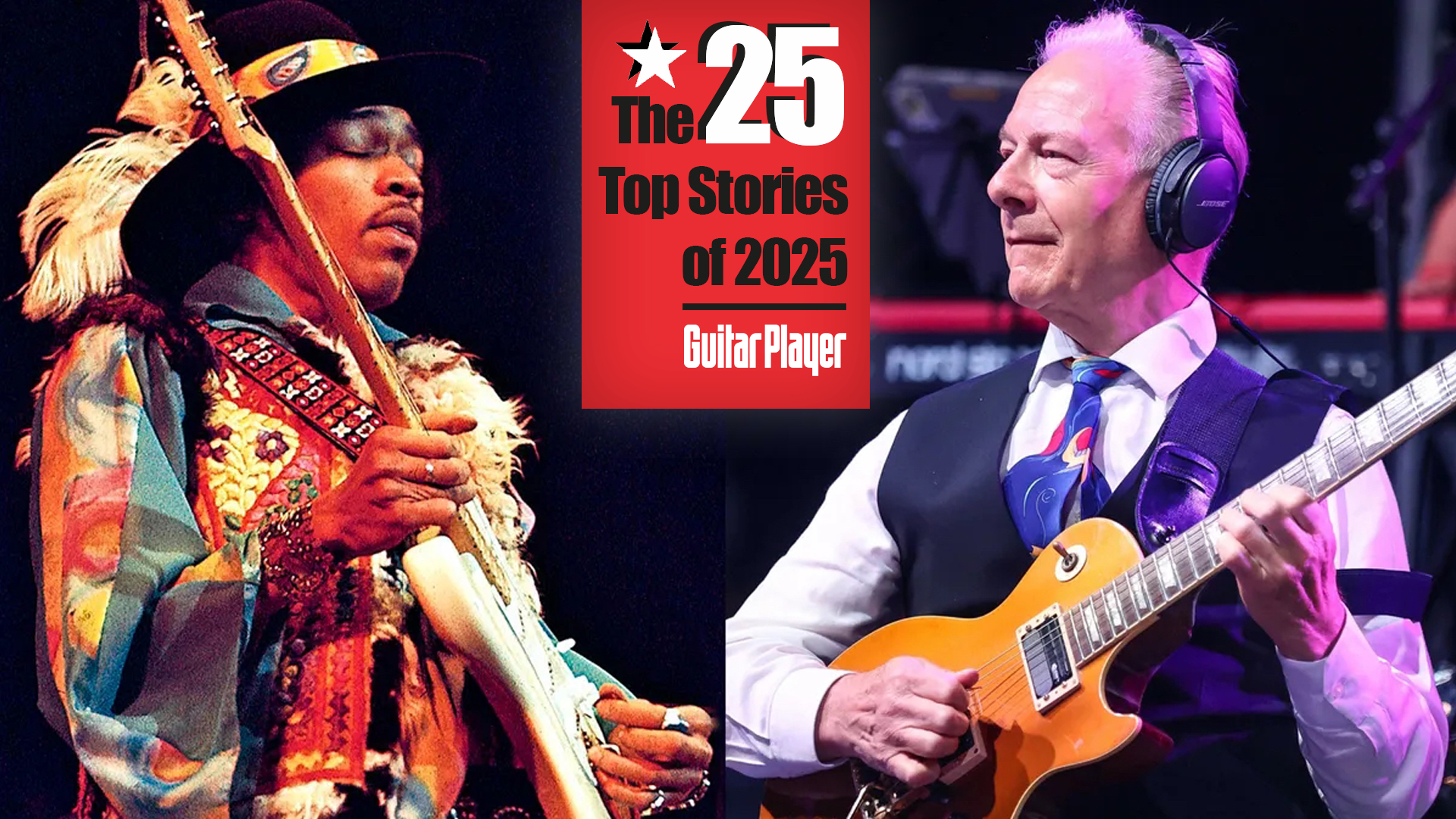Five of Steve Morse’s Best Tips for Guitar Players
The Dixie Dregs and Deep Purple axeman dishes out some of his finest advice.

Steve Morse makes every note count. One moment he soars across the fingerboard with amazing speed, and in the next lulls his listeners with slow, poignant phrases.
In the early '80s, during his Dixie Dregs years, the Deep Purple guitarist shared some fantastic tips that many electric guitar and acoustic guitar players will no doubt still find useful.
We've had a rummage through the Guitar Player vault to bring you five of his finest...
1. Warming Up
"The important part about warming up is not to do it too hard right at the beginning – do it slow and easy, then work up. You want to get your muscles warmed up, and then let them relax and loosen up. Then go and do it some more.
"In three to five minutes you can get warmed up enough to break for about 30 seconds or a minute. Then you can practice for as long as you want, as long as you mix it up. Don't do too much of one thing."
2. Learn to Walk Before Running
"I practice [new lines and techniques] slow 80% of the time, and then 20% of the time try to do it for speed. It's important to try to do it at speed, but keep going back to slow where you can play it perfectly.
"If you play it all slowly, then you won't have the experience of doing it fast. If you do it all fast, you'll make too many mistakes and be sloppy."
All the latest guitar news, interviews, lessons, reviews, deals and more, direct to your inbox!
3. Scale It Up
"I do all the major scale modes in three different positions, starting with my index, 2nd, 3rd, or 4th finger on the tonic. For any scale or mode, there's at least three different ways you can finger it starting on the same note and still stretch no more then one fret between your fingers.
"Say the A major scale on the 5th fret. If you start with your 1st finger, the 1st finger plays every note that falls on the 5th fret. The 2nd finger plays every note on the 6th fret, the 3rd finger every note on the 7th fret, and your pinkie plays every note on the 9th fret. There isn't any on the 8th, so the pinkie plays a one-fret stretch.
I do scales up and down the neck, starting picking up, starting picking down
Steve Morse
"Then do the same thing, only start with your 2nd finger on the tonic. In this case there are no stretches at all because your 1st finger goes down to the 4th fret. You go across and it all fits. When you start with your pinkie, you stretch on one fret.
"Those little stretches shouldn't affect you because you do them all the time when you play, anyway. I do scales up and down the neck, starting picking up, starting picking down."
4. First Cut Is the Deepest
"My approach to soloing is just play naturally and take takes. When you get one that sounds good, keep it. Go ahead and get another one that sounds good, and keep that. Sort of figure out what it is about it that sounds good – why does it feel good?
"If there's a way to make it better by changing a little bit more, do it. Otherwise, just keep one of the good ones. As most people will probably agree, your best solos generally come out of your first five to ten takes. A lot of times the very first ones will be some of the best."
5. The Show Must Go On
"My confidence will depend on how well my playing is at that moment. If the set's been going good, I'll keep playing better. If it's bad, I'll be trying a bit too hard to make up for it and I might keep making mistakes.
I try to keep my own hypercritical attitude away from the audience because I don't think they want to see that
Steve Morse
"This is on an introspective level, though. I have to emphasize that while this is happening, I still have a good time onstage. I don't make faces or throw down my guitar. I just keep on smiling because people have come to hear the band.
"Our first responsibility is to them, and I try to keep my own hypercritical attitude away from the audience because I don't think they want to see that."
Guitar Player is the world’s most comprehensive, trusted and insightful guitar publication for passionate guitarists and active musicians of all ages. Guitar Player magazine is published 13 times a year in print and digital formats. The magazine was established in 1967 and is the world's oldest guitar magazine. When "Guitar Player Staff" is credited as the author, it's usually because more than one author on the team has created the story.
